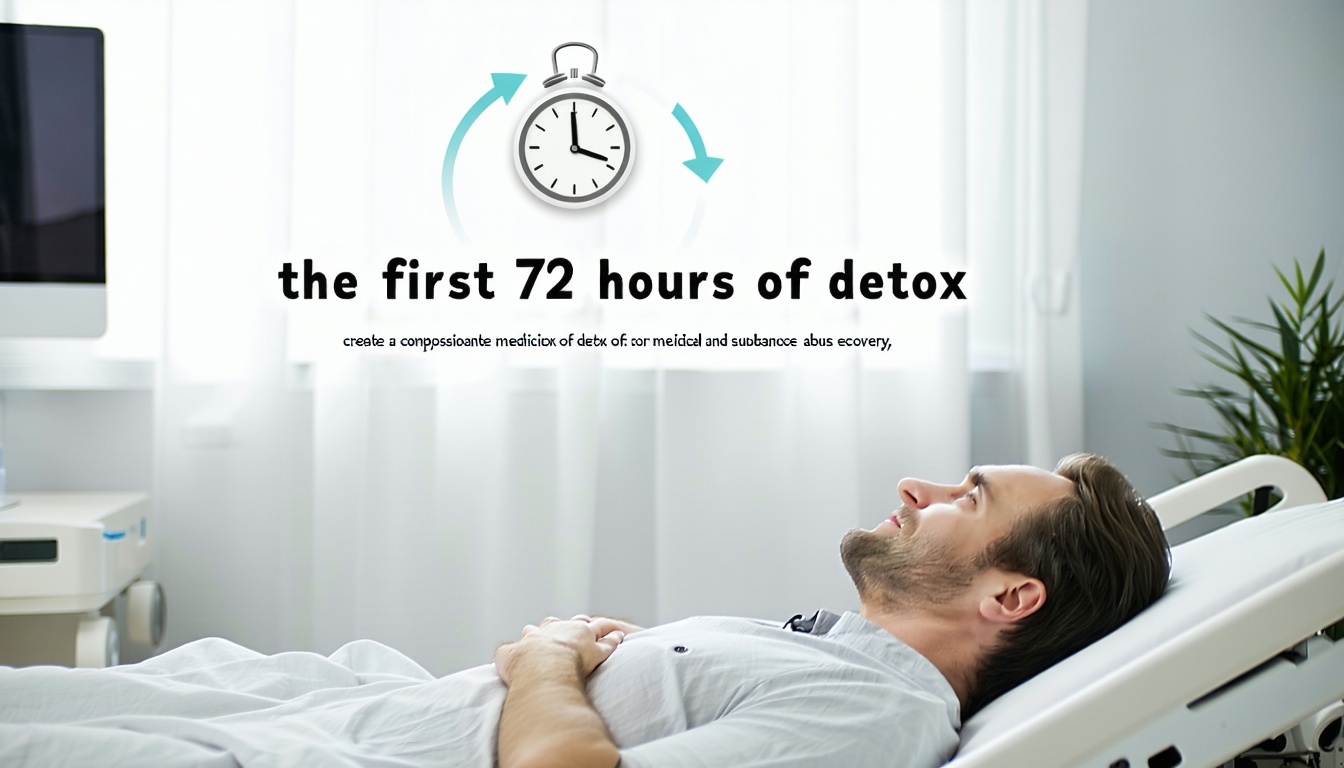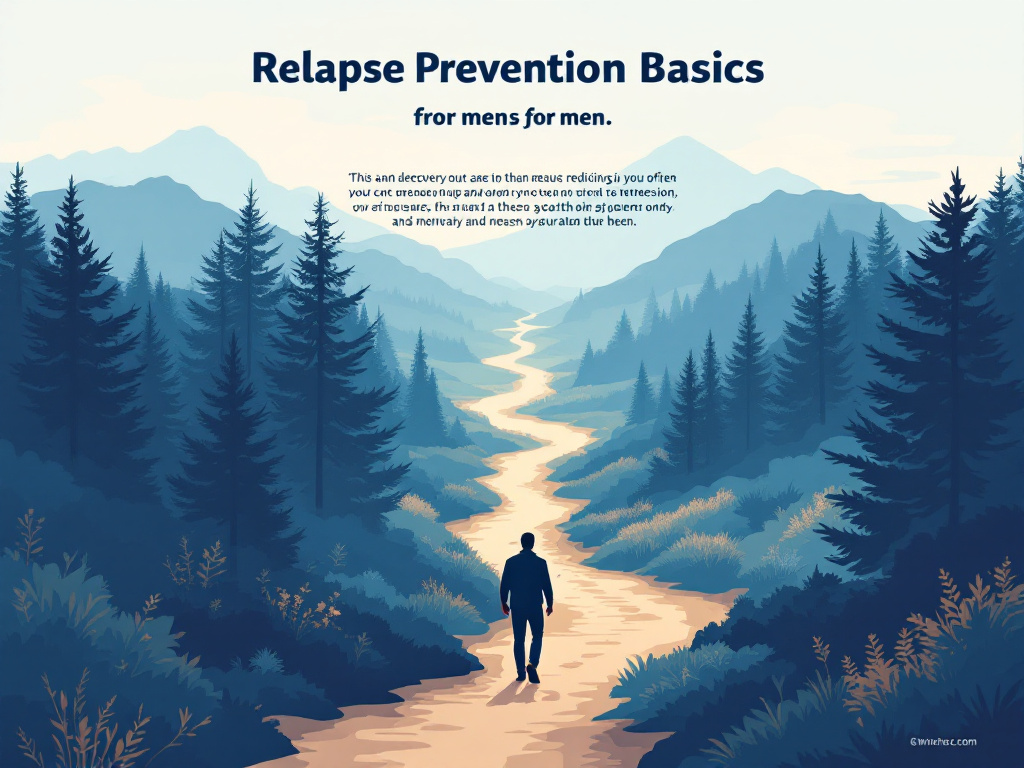The Detoxification Process
Understanding the detoxification process is essential as it highlights how our bodies work to remove toxins continuously. At Recovery Bay Center, we focus on supporting this natural process, especially during the critical first 72 hours of detox.
Natural Body Detox Organs
The body relies on several vital organs for detoxification, including the liver, kidneys, lungs, and skin. Each of these organs plays a crucial role in ensuring our health and well-being:
| Detox Organ | Function |
|---|---|
| Liver | Breaks down substances, separates beneficial chemicals from harmful toxins, and prepares toxins for excretion. Affected by constipation, which can hinder its functions. AcuMedic Clinic |
| Kidneys | Filter blood to remove waste and excess fluids, maintaining fluid and electrolyte balance. |
| Lungs | Filter carbon dioxide waste during breathing, aiding in toxin elimination. They support the body when other organs are overwhelmed. AcuMedic Clinic |
| Skin | Expels waste and toxins through sweat, converting unwanted chemicals into a water-soluble form. Skin can show signs of distress if the detox burden on other organs is high. AcuMedic Clinic |
Body’s Continuous Detox
The detoxification process is not a one-time event, but rather an ongoing mechanism that our bodies manage for optimal health. The liver, kidneys, lungs, and skin work together seamlessly to keep eliminating toxins while retaining essential nutrients and chemicals necessary for survival AcuMedic Clinic. Recognizing this natural detox process is crucial for understanding the body’s response during the initial stages of detox treatment.
Role of Lungs and Skin
The lungs and skin serve as vital components of our detoxification system.
-
Lungs: They play a critical role by filtering out carbon dioxide waste, providing oxygen to the body, and facilitating toxin elimination through exhalation. If other detox organs are struggling, the lungs can step in to help manage toxin levels AcuMedic Clinic.
-
Skin: The skin’s detox capability is often overlooked. It helps expel waste products, such as uric acid, through sweat. If this function is compromised, skin issues may develop, signifying that other detox organs are overburdened AcuMedic Clinic.
These insights into the detoxification process emphasize the importance of professional support during medical detox. Understanding what the body goes through in the first 72 hours can guide us to provide the highest quality care at Recovery Bay Center. For more details about the detox experience, visit our page on what to expect during medical detox at a professional facility.
Understanding Alcohol Withdrawal
Alcohol withdrawal can pose significant challenges for individuals seeking to detox from alcohol. Understanding the symptoms, progression, and risks associated with withdrawal is crucial for effective recovery.
Onset of Alcohol Withdrawal Symptoms
Symptoms of alcohol withdrawal typically begin within six to 24 hours after stopping or significantly decreasing heavy, long-term alcohol use. These symptoms can range from mild to severe and may include anxiety, tremors, sweating, nausea, and insomnia. The severity of these symptoms often correlates with the duration and intensity of alcohol use.
| Symptom | Onset Time |
|---|---|
| Mild Symptoms (anxiety, insomnia) | 6 to 12 hours |
| Moderate Symptoms (nausea, tremors) | 12 to 24 hours |
| Severe Symptoms (hallucinations) | 24 to 72 hours |
Progression of Alcohol Withdrawal
Alcohol withdrawal symptoms tend to peak between 24 to 72 hours after the last drink. Although many symptoms diminish within a few days, some individuals might experience lingering effects for weeks. The symptoms reflect the central nervous system’s response to the absence of alcohol, which it has become dependent on over time.
| Timeline | Symptoms |
|---|---|
| 0-6 Hours | Mild anxiety and insomnia |
| 6-12 Hours | Increased anxiety and tremors |
| 12-24 Hours | Nausea, vomiting, and sweating |
| 24-72 Hours | Risk of hallucinations and delirium tremens (DTs) |
Severe Alcohol Withdrawal Risks
Severe and complicated alcohol withdrawal can lead to life-threatening conditions, including delirium tremens (DTs). This severe form of withdrawal can be fatal, with a mortality rate of about 5% to 10% among those affected (Cleveland Clinic). Individuals experiencing severe withdrawal symptoms may require intensive medical intervention, sometimes necessitating treatment in an ICU for continuous monitoring and administration of medications like long-acting benzodiazepines (IV diazepam or IV lorazepam) to manage these symptoms effectively.
Understanding the risks associated with alcohol withdrawal can help us make informed decisions regarding detoxification and recovery. For those seeking support during this challenging process, exploring what to expect during medical detox at a professional facility can offer valuable insights into the care available for individuals facing withdrawal.
Medical Detox and Withdrawal Management
Treatment for Severe Alcohol Withdrawal
Severe alcohol withdrawal can pose significant health risks and may necessitate treatment in a hospital setting, potentially in the ICU, where continuous monitoring can prevent life-threatening complications. During this critical phase, treatment often includes long-acting benzodiazepines such as IV diazepam or IV lorazepam (Cleveland Clinic). This medical intervention enables healthcare professionals to closely monitor the patient’s condition while administering necessary medications.
For managing alcohol withdrawal symptoms effectively, our treatment protocols may involve symptom-triggered therapy based on established rating scales like CIWA-Ar. This approach helps determine the dosage of benzodiazepines needed based on the severity of the symptoms. Gradual tapering is often implemented once the patient is stabilized, ensuring a smoother recovery process.
| Treatment Protocols | Description |
|---|---|
| Long-acting Benzodiazepines | Used for managing severe withdrawal symptoms |
| CIWA-Ar Scale | Tool for assessing symptom severity |
| Gradual Tapering | Reducing medication dosage over time |
Importance of Professional Detox
Choosing professional detox for alcohol withdrawal is crucial for several reasons. Attempting to detox alone at home can be extremely dangerous and potentially life-threatening. Professional detox programs provide around-the-clock care, ensuring that patients have access to medical support and FDA-approved medications necessary for a safe withdrawal. This environment also facilitates a seamless transition to further treatment for lasting recovery.
Patients benefit from the expertise of trained healthcare professionals who can assess their condition, manage symptoms, and adjust treatment protocols as necessary. This level of care reduces the likelihood of complications and enhances the overall detox experience. For more information about what to expect, see our article on what to expect during medical detox at a professional facility.
Safety in Alcohol Detox
Ensuring safety during alcohol detox is paramount. With the potential for severe withdrawal symptoms, clinical supervision is essential to monitor and manage health risks effectively. Professional detox programs implement measures such as continuous monitoring and individualized treatment plans. Symptom-triggered therapy has been shown to reduce the number of patients requiring benzodiazepines during withdrawal, thanks to the precise application of assessment tools like the CIWA-Ar scale.
By prioritizing patient safety, we can provide the necessary support throughout the detox process. This commitment not only helps manage withdrawal symptoms effectively but also sets the stage for recovery. Proper detox care lays a solid foundation for sobriety, which can be further reinforced through continued treatment options and therapy. To learn more about combining detox with therapy for a seamless transition to rehab, visit combining detox with therapy for a seamless transition to rehab.
Health Implications of Detoxification
Detoxification is a critical phase in the recovery process and understanding its implications can help us navigate the challenges effectively. This section covers potential complications, nutritional challenges, and ways to manage gastrointestinal disturbances during detox.
Complications in Detox Process
The detoxification process can be fraught with complications, especially for individuals who have developed dependencies on substances like alcohol and opioids. It is essential to recognize that withdrawal symptoms may lead to severe complications, including seizures or delirium tremens in cases of alcohol withdrawal. These serious conditions necessitate immediate medical attention and monitoring.
Proper guidelines dictate that detoxification staff should be knowledgeable about the nutritional deficits associated with specific substances. Here are common complications that may arise during detox:
| Potential Complications | Description |
|---|---|
| Seizures | Sudden, uncontrolled neuronal activity, particularly in alcohol withdrawal. |
| Delirium Tremens | Severe agitation, confusion, and hallucinations that can occur in chronic alcohol users. |
| Nutritional Deficiencies | Loss of essential nutrients due to substance abuse that may also require management. |
Nutritional Challenges in Detox
As the body undergoes detoxification, it may experience various nutritional challenges. Substance abuse often leads to deficiencies in essential nutrients, such as proteins, fats, and vitamins. The impact of these deficiencies can hinder the healing process. For instance, chronic alcohol dependence can result in magnesium deficiency while opioid use can adversely affect calcium absorption and increase cholesterol levels (NCBI Bookshelf).
To support the detoxification process, it is vital to implement a balanced diet rich in:
- Low-fat foods
- Proteins
- Complex carbohydrates
- Dietary fiber
Establishing these nutritional bases helps mitigate the adverse effects of substance abuse and promotes recovery.
| Nutrient | Function |
|---|---|
| Proteins | Essential for cell repair and growth. |
| Complex Carbohydrates | Provide sustained energy and stabilize mood levels. |
| Dietary Fiber | Supports digestive health and proper bowel function. |
Managing Gastrointestinal Disturbances
Gastrointestinal disturbances such as nausea, vomiting, and diarrhea can significantly complicate detoxification and may increase the risk of dehydration. These symptoms can disrupt blood chemistry balance, making proper hydration essential.
To manage these disturbances effectively, individuals are encouraged to follow dietary recommendations, including:
- Staying hydrated with adequate water intake.
- Consuming easily digestible foods.
- Reducing high-sugar and processed food intake that can exacerbate gastrointestinal issues.
Incorporating foods rich in antioxidants can also play a beneficial role in protecting the body during detoxification. Antioxidants help combat oxidative stress, reducing damage caused by free radicals. It is recommended to obtain these nutrients from whole food sources rather than supplements (Healthline).
By addressing these health implications thoughtfully, we can ensure a smoother detox process and set a solid foundation for future recovery. For more information on what to expect during this critical period, visit our article on what to expect during medical detox at a professional facility.
Detoxification and Withdrawal Symptoms
When discussing the first 72 hours of detox: what the body goes through, it is important to understand both the physical and psychological withdrawal symptoms individuals may experience during this critical period. Our goal is to equip you with the knowledge necessary for making informed decisions regarding detox and recovery.
Physical Symptoms of Withdrawal
Symptoms of alcohol withdrawal typically commence within six to 24 hours after stopping or significantly reducing heavy, long-term alcohol use. This early withdrawal phase can present a range of symptoms that may escalate in severity within the first 72 hours. The following table outlines common physical symptoms encountered during this period:
| Time Frame | Symptoms |
|---|---|
| 0 – 24 hours | Anxiety, insomnia, nausea, sweating |
| 12 – 48 hours | Tremors, hallucinations, increased body temperature |
| 24 – 72 hours | Severe symptoms such as seizures and delirium tremens (DTs) may occur in approximately 1%-1.5% of those withdrawing. |
It is crucial to seek professional help during this time, as withdrawal symptoms can be life-threatening without medical intervention.
Psychological Effects of Withdrawal
Alongside the physical symptoms, psychological effects can also emerge during the detoxification process. Individuals may experience heightened anxiety, mood swings, and intense cravings for substances. These mental symptoms can be challenging and often require professional guidance and support to manage effectively. Understanding that psychological withdrawal can persist beyond the initial detox phase is crucial for individuals and their support systems.
Some common psychological effects during detox may include:
- Increased anxiety and stress
- Irritability or agitation
- Depression and fatigue
- Difficulty concentrating
Managing these psychological effects is part of the detox process, and integrating therapy can be beneficial (what to expect during medical detox at a professional facility).
Dangers of Home Detox
Attempting to detox at home without professional support poses significant risks. The dangers include:
- Increased likelihood of severe withdrawal symptoms, including delirium tremens
- Inadequate management of medical issues or complications
- Lack of access to necessary medications and 24/7 supervision (managing withdrawal safely with 24/7 medical supervision)
Substance abuse recovery requires a thorough and supervised approach, especially during the initial withdrawal phase. We emphasize the importance of a professional medical detox to safely navigate withdrawal symptoms and support sustained recovery.
Choosing professional care ensures a safer and more effective transition into recovery. It sets the foundation for long-term sobriety while addressing both the physical and psychological challenges associated with detoxification.
Professional Support in Recovery
Clinical Monitoring in Detox
Clinical monitoring is a critical component of the detoxification process. Detox is an ongoing procedure that our bodies naturally perform to eliminate toxins and maintain good health. Key organs, including the liver, kidneys, lungs, and skin, work together to effectively cleanse harmful substances while retaining beneficial chemicals.
Monitoring during detox ensures that any withdrawal symptoms, particularly those associated with alcohol withdrawal, are managed effectively. Symptoms can begin within six to 24 hours after stopping or significantly reducing alcohol intake. They can vary widely from mild to severe, with severe cases identified as delirium tremens.
One vital aspect of clinical monitoring is the ability to address complications swiftly, such as those stemming from constipation that can limit the liver’s detox functions. This vigilance supports not only the physical safety of patients but also aids in a smoother detox experience.
| Monitoring Component | Purpose |
|---|---|
| Vital Signs Tracking | Ensures stability during withdrawal |
| Symptoms Assessment | Identifies severity of withdrawal effects |
| Laboratory Tests | Monitors liver function and metabolic health |
Medication-Based Treatment
Some individuals experiencing severe alcohol withdrawal may require medication-based treatment, often necessitating hospitalization. In critical cases, continuous monitoring in an Intensive Care Unit (ICU) may be necessary to prevent life-threatening complications. Long-acting benzodiazepines such as IV diazepam or IV lorazepam are typically used in these situations.
These medications can help stabilize withdrawal symptoms and provide a safe environment for recovery. Choosing a facility with the capacity for such advanced medical care ensures a higher level of safety during the crucial first stages of detox.
Implementing Withdrawal Management
Effectively managing withdrawal symptoms involves tailored benzodiazepine treatment protocols that can include loading doses and symptom-triggered therapy. Utilizing assessment tools like the Clinical Institute Withdrawal Assessment for Alcohol Scale, Revised (CIWA-Ar), allows healthcare professionals to effectively gauge patient needs and administer medication accordingly. This method helps in gradually tapering doses once the patient’s condition stabilizes (NCBI Bookshelf).
Training staff to implement the CIWA-Ar scale is vital for successful management of withdrawal symptoms. By adopting symptom-triggered therapy, we aim to reduce the necessity for benzodiazepines during the detox process, promoting a safer and more comfortable experience for patients.
For more insights into what to expect during this critical period, consider reading our article on what to expect during medical detox at a professional facility. Understanding the complexities and challenges of withdrawing from substances ensures that individuals and their loved ones are well-prepared for the journey ahead.





